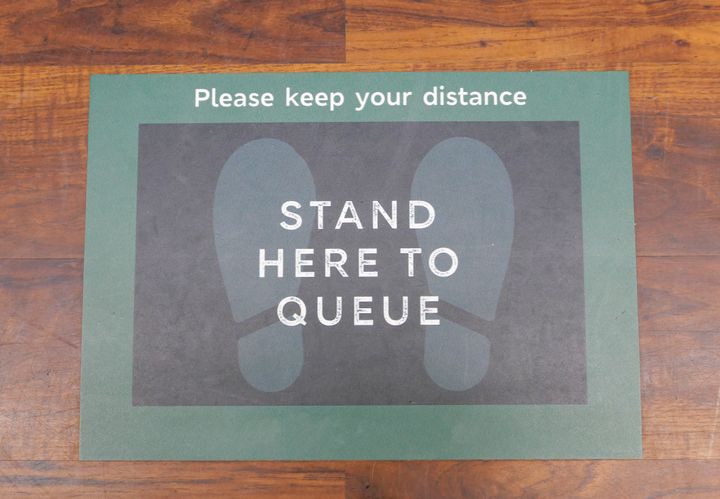
Every Monday, we’ll answer your questions on Covid-19 and health in a feature published online. You can submit a question here.
HuffPost UK reader Jean asked: “What’s the risk of catching Covid in a queue, both inside and outside?”
If there’s one thing Brits are good at, it’s queuing. And we’ve had a lot of practise this past year, queueing to enter supermarkets, coffee shops and even to get into toilets at the park.
With lockdown measures slowly and steadily easing, it’s understandable people want to know what the risk of catching Covid-19 in a queue is.
“It is difficult to make an exact estimate of the risk [from queueing] because there are so many factors,” says Professor Paul Hunter, from the Norwich School of Medicine at the University of East Anglia. “But the main driver of risk is indoors versus outdoors and how close people are in the queue.”
Submit a coronavirus health question to HuffPost UK.
The risk is greater for indoor queues as opposed to outdoor queues – about 19 times greater, says Prof Hunter – because it’s harder for airborne particles to disperse inside. Outdoors you have sunshine, wind and a greater volume of fresh air that work in your favour, dispelling any potentially Covid-laden droplets.
Indoors, the risk is higher if you’re queueing in a small shop compared to a larger supermarket, as the space is more enclosed. The smaller the space is, the harder it is for airborne particles to disperse – meaning you’re more likely to breathe them in.
Of course, ventilation is a big factor, too, so if windows and doors are open, this will help reduce the risk of the virus spreading.
Other measures that reduce your risk of catching Covid while queueing – both inside and out – include keeping two metres (or one metre at the very least) away from others, and wearing a face mask.
“Whilst there is still some dispute about the distance between people and how much risk there is,” says Prof Hunter, “it is certainly the case that the further you are from someone the less risk.”
If someone isn’t respecting the distance in the line – and most should, as there are often stickers on the floor telling you where to stand – it’s worth asking them politely to move back a bit. Modelling suggests for every extra metre further away a person stands from an infected individual – up to three metres – the risk of infection or transmission halves.
Experts also recommend avoiding talking to others, as when we – and others – speak, we project more droplets. We know Covid is mainly transmitted from person to person contact, so talking (or shouting, as is sometimes the case when you’re masked up in a queue) definitely won’t help matters.
The risk will also depend on the infection rate in your area. Keep an eye on this, particularly with more transmissible variants doing the rounds. “In the middle of a surge, then the risk [of catching Covid in a queue] is high,” Prof Hunter explains. “But it’s low when the level of disease in the community is low.”
Ultimately, adds Prof Hunter: “Any queue outside where people are two metres apart and not interacting with each other would have very low risk. But a big queue of people indoors where they are crammed in and excitedly chatting to each other would have a high risk.”
If you’re really worried about transmission in a queue indoors, you could try double masking, wearing a surgical mask with the ear loops tied to get a better fit to your face, or wear a face shield in addition to your face mask.
Experts are still learning about Covid-19. The information in this story is what was known or available at the time of publication, but guidance could change as scientists discover more about the virus. To keep up to date with health advice and cases in your area, visit gov.uk/coronavirus and nhs.uk.